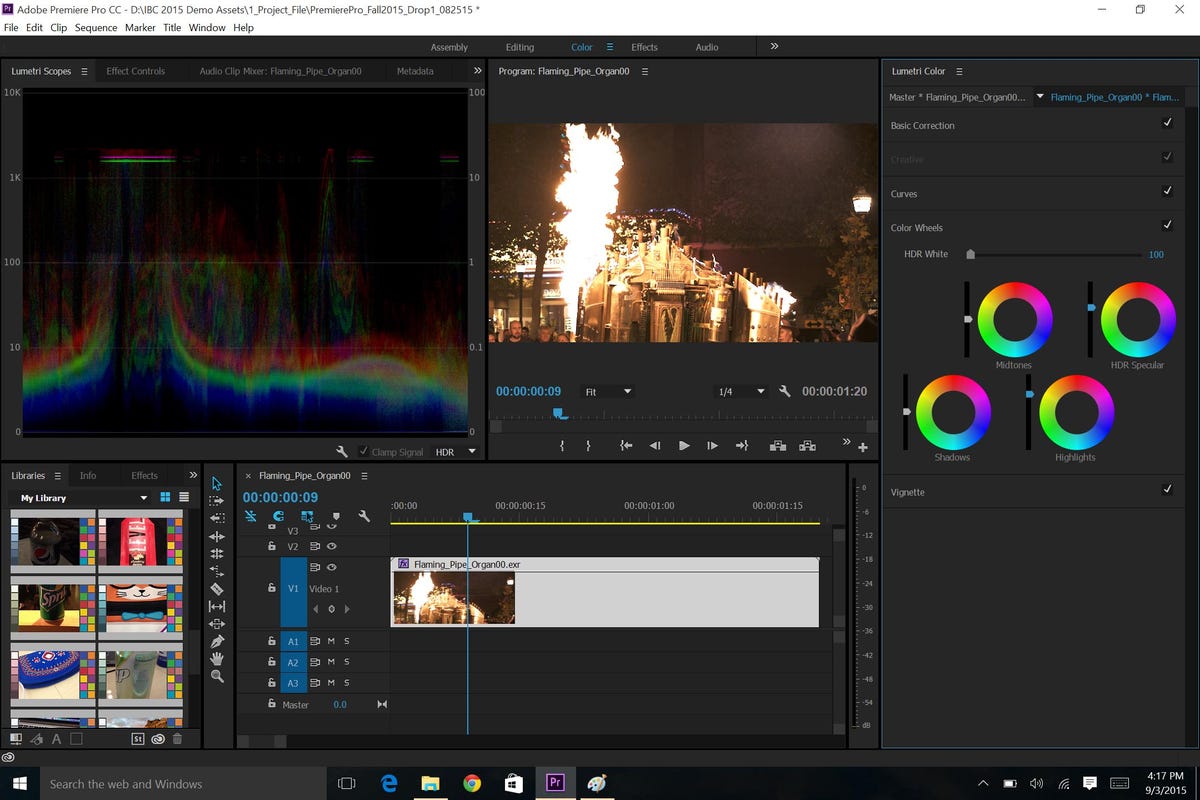 Enlarge Image
Enlarge ImageAdobe
If you’re looking for a one-word summary of this season’s updates to Adobe Creative Cloud’s video applications, I’d go with “trendy” — but that’s not a bad thing. Most of the enhancements are targeted at creating trendy types of content on trendy devices for trendy delivery and monetization. There are also some meat-and-potatoes updates to the audio tools, however, that I think will win more smiles from mainstream editors churning out content daily. You won’t see any of these updates roll out until the end of the year though.
Pricing for the Creative Cloud subscription remains the same; as yet, there’s no video-only subscription package. (Here is US, UK and Australian pricing for CC as a whole and individual products.) The video apps now incorporate Adobe Stock, which was rolled out as part of Creative Cloud earlier this year.
This round of features isn’t as whizzy as the last set, but builds meaningfully on those updates. Adobe enhances the touch-and-trackpad-friendly interface redesign in Premiere Pro (PP) that’s optimized for creating rough cuts. It has bigger bin thumbnails that you can easily scrub through, set in-and-out points and drag to sequence, all with multitouch gestures and visual feedback. There’s expanded multitouch gestures such as pinch to zoom in Premiere and After Effects.
Adobe’s fall video updates have a little something for everyone (pictures)






Expanded format support in Premiere includes the ability to natively ingest HEVC/H.265 UHD video — 4K-TV resolution that’s output by cameras like Samsung’s NX1 and NX500 — as well as encode it via Adobe Media Encoder (AME). In addition to adding the ability to import EXR and Dolby Vision mezzanine files, it offers a couple of new tools for working with HDR, including an expansion of the waveform monitor highlight-frequency range up to 10,000 IRE (from the older standard 100 IRE) and an HDR panel in the Lumetri color workflow with the ability to control specular clipping.
Premiere’s slow-motion workflow gets a new GPU-optimized Optical Flow option for interpolating frames during time remapping, presumably to deliver better results. And you’ll be able to directly encode and upload to Facebook from within AME, which will return the Facebook video link internally as well.
The touch/trackpad-operation optimizations in Premiere also extend to After Effects (AE), which gains some of the redesigned interface from Premiere, such as the expanding stacked panels on the right side for easier finger manipulation and the workspace bar. Adobe also brings the updated Lumetri color panel to AE, with the HDR updates, though Adobe says that color grading (retouching) should still be done in Premiere and that here it’s more for maintaining that grading and applying effects profiles. The company is also adding profiles for more recent digital-cinema color spaces, including Arri Raw, Dolby Vision and DCI.
Character Animator preview 3 also inherits touch support for controlling movements, rotation, zoom and so on, as well as adding French, German and Japanese language support.
However, I think the most generally popular updates will be in Audition. The new Remix feature uses beat detection, source separation and content awareness for automatically moving pieces of audio around in order to creative a theoretically seamless clip at a target duration (as opposed to changing the rate and pitch, which doesn’t work well for long audio). Generate Speech Effect lets you plug in a script and create a placeholder voiceover at any normal speaking rate in one of a set of timbres; you can later replace it with the real voiceover track. Match Volume has morphed into the more findable Match Loudness, and adds new compliances, such as EBU R128, ATSC A/85 and ITU BS.1770-3, updated from 1770-2. (Also available in PP and AE.)
While many of the updates to Adobe’s Primetime video delivery and monetization platform are a bit out of CNET’s domain, they’re slated to enable a better experience for us as end users — longer persistence of a login session with background authentication, more mobile-friendly access, an HTML5 player and AC-3-quality audio delivery for Internet-delivered content.




